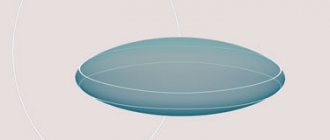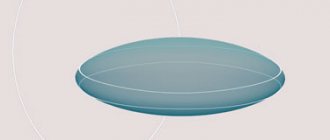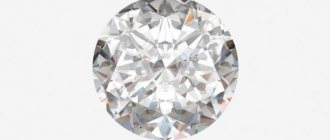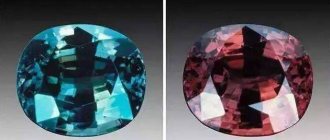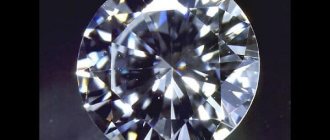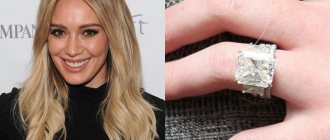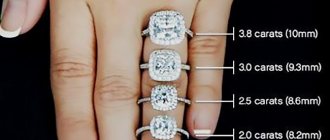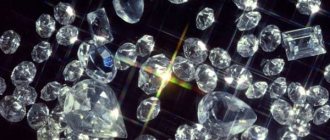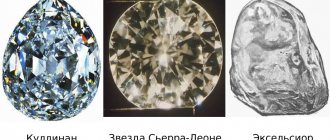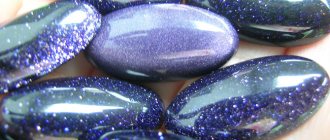Diamond cutting is not only a complex process of polishing jewelry diamonds and giving them a certain shape.
This is one of the main characteristics, including stone parameters, proportions, location and symmetry of edges, and polishing quality.
After all, by nature, a diamond is endowed with only inner beauty, and skillful processing reveals it.
Thus, thanks to the skill and creativity of the jeweler, a diamond is born from an inconspicuous-looking mineral - a stone with an amazing shape and unique shine.
What is a diamond cut?
Cutting is the process of giving a shape to a diamond, which can highlight its noble color and remove natural defects, giving a glow to the gemstone.
Diamonds are cut by hand. This process is painstaking and thorough, and the quality of the cut and the further fate of the stone directly depend not only on the quality of the diamond, but also on the skill of the cutting specialist. The type, shape and cutting method of each crystal is selected depending on its size, weight, color characteristics and purity. The main objective of the diamond cutting process is to maintain its carat weight, and then to balance the clarity (presence of defects) and color of the diamond.
Diamond, step and mixed cuts
Brilliant cut is a method of diamond processing in which the arrangement and number of facets give the stone maximum brilliance. This is a perfectly calibrated diamond shape, revealing its ability to reflect and refract light. For example, the classic round cut of a gemstone is a brilliant cut. Such a stone must have 57 facets.
A step cut is characterized by a strictly parallel arrangement of edges, which means the shape of the stone will be square or rectangular (very rarely, trapezoidal). This cut of the diamond does not add much brilliance or play of light, but favorably emphasizes the purity, transparency and depth of color of the stone. The most common step cut forms are emerald and baguette.
The mixed cut combines the features of both brilliant and step cuts. It is used when it is necessary to maintain the maximum weight of a gemstone, while emphasizing its color and quality characteristics. The most attractive and popular shape of this cut is the princess.
All non-classical round cut diamonds are called fancy. These include pear, heart, oval, marquise, cushion.
Faceted: fantasy. Wedge varieties
Wedge cut shapes are often considered variations of the round brilliant cut. In this case, many edges in the form of wedges are applied to the surface, which well reveal the color of the stone and enliven the play of light in it.
Oval – this cut compares favorably with round by maintaining the weight of the stone. It was created in the 1960s by jeweler Lazar Kaplan. Oval-cut stones usually have 57 facets, although the number may vary. The elongated shape allows you to create the illusion of a larger stone; it looks especially advantageous in rings. The oval cut is used mainly for large transparent stones - aquamarines, amethysts, sapphires, topaz.
Marquis (Marquise) is an oval with pointed ends, similar to a boat. This cut was created in France in the mid-18th century, and according to legend, it was dedicated to the smile of the Marquise de Pompadour. The marquise also has 57 facets and is characterized by a slight loss in the weight of the nugget: if the stone is initially oblong, up to 80% can be preserved. This is how diamonds, amethysts, emeralds, and rubies are cut. The Shuttle cut is considered a variation of the Marquise - it has a narrower upper platform and slightly fewer facets.
Photo 3: oval cut
Photo 5: marquise cut
Pear – this cut visually resembles a drop: one end is rounded, the other is pointed. It is sometimes considered a hybrid of the round brilliant cut and the marquise cut. The smooth platform is also made in the shape of a drop, there are usually 57 wedge faces. Such a stone should have clear symmetry at the point of narrowing, since this is where the play of light is concentrated.
Aquamarines, amethysts, and topazes are cut in the shape of a Pear. The Pandelok cut is a variation of the Pear, but its pavilion is deeper and rounder.
Briolette, Drop, Olive (Olive) - varieties of elongated teardrop shape. Unlike Grusha, they have neither a platform nor a girdle. The surfaces of Briolette and Olive are completely covered with wedges, only the shape of the Olive resembles an ellipse with cut ends. In the Drop, the narrow upper part is formed by long edges extended downwards, and the rounded lower part is formed by small wedges. Stones cut in this way are mainly used as pendants.
In elongated Oval, Marquise, and Pear cuts, if the proportions and symmetry are disturbed, the optical effect of a “bow tie” may appear: a dark spot in the center of the table.
Photo 5: pear cut
The Princess is a rectangular wedge cut and is the second most popular cut for diamonds. It was created in the 1980s by jeweler Bezalel Ambar - he branded the original version with 49 facets under the name Quadrillion. The princess has square outlines and sharp corners, and the deep pavilion, where the play of light is concentrated, ends in a spike. The 58 facets create a brilliance that rivals round diamonds, but retains about 80% of the stone after cutting.
Flanders is a modification of the Princess, which has 61 sides. It was also invented in the 1980s, named after the Belgian region of Flanders. Features cut corners and very complex symmetry, so the cutting process takes three times longer than creating a round diamond.
Photo 6: princess cut
Antique (Antique) or Cushion (Cushion) - this cut has existed for more than a hundred years and at one time was almost as popular as round brilliant diamonds are today. The shape of the Cushion (English cushion - “pillow”) really resembles a pillow. The stone has rounded corners, 72 sides, and can be square or slightly elongated. This is how diamonds, amethysts, sapphires, emeralds, rubies, quartz and its varieties are cut. By the way, the cut received its other name - Antique - in recognition of its historical roots: its predecessor is considered to be the Old Mine Cut of the 18th century.
Trilliant (Trillian, Trillion) is a triangular wedge cut created by the Asscher brothers at the beginning of the 20th century. The corners of the stone can be sharp, beveled or rounded; some options have a pronounced triangular area, some do not. The classic Trilliant has 43 facets, but modern versions can have 50 facets or more. This cut is well suited for light stones: diamond, aquamarine, beryl, white sapphire. Some jewelers use it to lighten dark stones - tanzanite, amethyst, rhodolite. Varieties of the Trilliant can be considered the Shield and Troidia cuts, in which the sides are slightly curved outward.
The heart is one of the most complex and expensive wedge cut shapes. It is often used in exclusive jewelry. In principle, it resembles a Pear, but splits on the rounded side, taking the shape of a heart. The stone is usually equal in length and width, and consists of 59 facets - their number may vary depending on the original size of the stone. This is how rubies, amethysts, topazes, garnets, and sometimes colored diamonds are cut.
Ball or Sphere is a rather rare type of wedge cut, which has 120 facets or more. Despite the fact that a stone processed in this way will not sparkle very brightly, the cutting itself is extremely labor-intensive and requires high skill.
Photo 7: heart cut
Also worth noting is the collection of polygonal “floral” cuts (Fire Rose, Sunflower, Dahlia, Calendula, Zinnia), which were created by the famous jeweler Gabi Tolkowsky, nephew of the creator of the “ideal diamond”. They are designed specifically for rough diamonds over 0.25 carats and are based on unusual angular parameters. Russian experts have developed the Happy decagonal cut, which has 81 facets. Visually, it is very similar to a round diamond, but, like many other fancy options, it has less weight loss from the stone.
Circle
The circle cut has 57 facets (the generally accepted designation is Kr 57). This is perhaps the most popular diamond shape today.
It is designed specifically to maximize the shine of the stone. However, small defects and color tints in round diamonds will be less noticeable compared to stones of other shapes.
Many buyers prefer round diamonds, deservedly considering them classics.
Nowadays you can find round-cut diamonds with 17 facets (indicated on the product tag as Kr 17). In this way, small diamonds with a diameter of 0.7 to 1.2 mm are cut, which are attached as accompanying large or medium-sized diamonds, or in the form of diamond “sprinkling”, when the surface of the jewelry is as if strewn with small stones, as well as in diamond “paths” . The 17-facet circle cut allows you to maintain a balance between the brilliance and price of the diamond.
How to make a choice?
If sparkle and sparkle are what you are looking for, cushion is the best choice when comparing the two cuts.
However, not all people prefer highly sparkling diamonds, so consider an Asscher if you want a stone with a soft sparkle.
However, keep in mind that you will likely have to choose a higher clarity and color grade for a diamond of this cut if you want it to appear flawless and colorless.
With a cushion cut, on the other hand, you have more leeway and can choose a lower clarity or color because the added shine partially offsets the appearance of natural imperfections and tones.
Radiant
The radiant cut is always a rectangular or square shape with slightly truncated corners. This cut is also a brilliant cut; it combines the best qualities of the “princess” and “emerald” shapes.
“Radiant” refers to a mixed type of cut and has high brilliance levels of the diamond, and also favorably emphasizes the shade of the gemstone. Fancy diamonds are cut in this form, which allows their color to be conveyed as brightly as possible. Such stones are very rare to find, and due to their strict shape, they are more often chosen by men.
